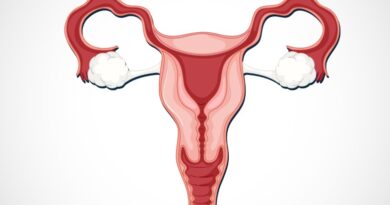Polyhydramnios: Causes, Symptoms and Complications
Polyhydramnios, a condition characterized by an excessive accumulation of amniotic fluid in the gestational sac, is a complex and potentially concerning pregnancy condition. While amniotic fluid plays a vital role in supporting fetal development, an abnormal increase can lead to various complications for both the mother and the baby. In this comprehensive guide, we will delve into the causes, symptoms, and potential complications associated with polyhydramnios.
Understanding Polyhydramnios

Polyhydramnios occurs when there is an excessive amount of amniotic fluid present during pregnancy. The amniotic fluid surrounds and cushions the developing fetus, providing protection and promoting optimal growth. However, when the fluid level becomes abnormally high, it can result in complications that require careful monitoring and management.
Causes of Polyhydramnios
- Maternal Factors: Various maternal conditions can contribute to the development of polyhydramnios. These include gestational diabetes, obesity, and certain autoimmune disorders. Maternal diabetes, for instance, can lead to increased fetal urination, a key factor in amniotic fluid regulation.
- Fetal Factors: Certain fetal anomalies can disrupt the normal balance of amniotic fluid production and absorption. Conditions such as gastrointestinal obstructions or neurological disorders that affect fetal swallowing may result in polyhydramnios.
- Twin and Multiple Pregnancies: Polyhydramnios is more common in pregnancies with twins or higher-order multiples due to increased fetal urine production and amniotic fluid levels.
- Genetic Factors: Genetic factors may also play a role. In some cases, polyhydramnios has been associated with chromosomal abnormalities.
- Placental Issues: Disruptions in placental function can lead to an imbalance in fluid production and absorption. Conditions like placental hydrops or chorioangiomas may contribute to polyhydramnios.
Symptoms of Polyhydramnios
- Abdominal Discomfort: Many women with polyhydramnios experience increased abdominal pressure and discomfort due to the enlarged uterus.
- Shortness of Breath: The excess amniotic fluid can compress the diaphragm, causing shortness of breath for the expectant mother.
- Swelling: Swelling in the lower extremities may occur as a result of the pressure on blood vessels from the enlarged uterus.
- Uterine Contractions: Polyhydramnios can lead to uterine contractions, potentially triggering preterm labor.
- Difficulty in Fetal Monitoring: The excess fluid may hinder accurate monitoring of the fetus’s heart rate and position.
Complications of Polyhydramnios
- Preterm Labor: The increased uterine irritability caused by polyhydramnios can lead to premature contractions and labor.
- Placental Abruption: Polyhydramnios raises the risk of placental abruption, a condition where the placenta separates from the uterine wall prematurely.
- Postpartum Hemorrhage: The uterus, stretched beyond its normal capacity, may not contract effectively after delivery, increasing the risk of postpartum hemorrhage.
- Fetal Malpresentation: Excessive amniotic fluid can prevent the fetus from assuming the proper head-down position, increasing the likelihood of breech or transverse presentation.
- Cord Prolapse: Polyhydramnios may contribute to umbilical cord prolapse, a serious complication where the cord slips through the cervix ahead of the baby.
- Respiratory Distress: Babies born to mothers with polyhydramnios are at a higher risk of respiratory distress syndrome due to underdeveloped lungs.
Diagnosis and Management
- Ultrasound: Ultrasound is a primary tool for diagnosing polyhydramnios, enabling measurement of amniotic fluid volume.
- Maternal Monitoring: Pregnant individuals with polyhydramnios may require close monitoring for potential complications.
- Amnioreduction: In severe cases, a procedure called amnioreduction can be performed to drain excess amniotic fluid.
- Underlying Condition Management: Treating underlying maternal conditions, such as diabetes or autoimmune disorders, can help manage polyhydramnios.
- Fetal Interventions: In cases of fetal anomalies, surgical interventions may be considered to alleviate the underlying issue contributing to polyhydramnios.
Navigating Polyhydramnios
Polyhydramnios is a multifaceted condition with potentially serious consequences for both mother and baby. Early diagnosis and management are essential in minimizing the risks associated with this condition. Expectant mothers and healthcare providers must work collaboratively to ensure the best possible outcome for both the pregnancy and the health of the newborn. As medical understanding continues to evolve, advancements in diagnostic techniques and treatment strategies offer hope for improved outcomes in cases of polyhydramnios.




